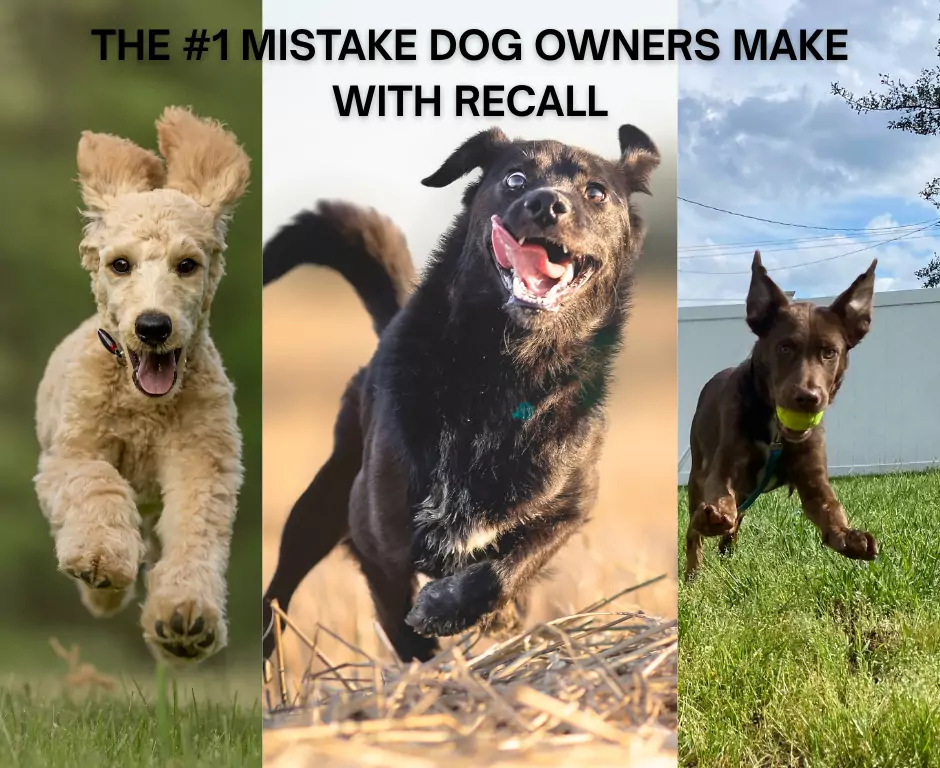The #1 Mistake Dog Owners Make With Recall
July 20, 2025

Let’s talk about recall: getting your dog to come when called.
It’s one of the most important behaviors your dog will ever learn. It can give them more freedom, open up off-leash opportunities, and literally save their life.
So why is it the least reliable command in most households?
Because owners teach recall like it’s a suggestion. Not a requirement.
Most people poison their recall cue
Here’s what happens in a lot of homes:
You call your dog to come.
They ignore you, so you call again, but louder this time.
They still don’t come. You shake a treat bag or squeak a toy.
When they finally come, you angrily clip the leash and go inside, game over.
What did your dog just learn?
“Come” is optional, and I can come when I feel like it.
There’s no consequence for ignoring that command.
It usually ends the fun.
We’ve all done it. But if you want recall to work when it really counts, on a busy trail, near a road, or in a distracting environment, you have to teach it like it matters.
What reliable recall actually looks like
A reliable recall means your dog:
Comes the first time you call
Does it quickly and directly
Responds no matter what they’re doing
Doesn’t stop to sniff or detour on the way
Knows that ignoring you has a consequence
That doesn’t happen by accident. It happens through consistent training, appropriate tools, and accountability.
My top rules for recall training
1. Don’t call your dog for something they hate
If you only call your dog when it’s time to leave the park or take a bath, they’ll start avoiding you. Mix it up and call them to you, reward, and send them back to play.
2. Only say it once
If you have to say “come” five times, your dog is learning that they don’t have to listen until the fifth cue. Use it once, and mean it.
3. Use a long line until they’re proofed
Letting your dog off-leash before recall is solid is like giving a toddler free rein in a parking lot. A 15-foot long line gives you control while you build reliability.
4. Reinforce AND correct
Yes, your dog should be rewarded for coming. But they also need to understand that blowing you off isn’t an option. If you don’t follow through when they ignore you, you’re just teaching them that “come” is flexible.
5. Make it fun, but mean it
Training should be engaging, but don’t be afraid to add accountability. Most dogs thrive when there’s both clarity and motivation.
What if your dog already ignores you?
Good news! You can fix it.
Start over with a new recall word if you’ve poisoned “come.” Use a long line, reset your expectations, and make sure you have both a reward system and a consequence system in place.
I’ve seen dogs go from completely ignoring their owners to snapping their head around at a whisper, just by building consistency and clarity.
The real reason recall fails
It’s not because your dog is stubborn. It’s because they’ve learned it doesn’t matter.
They’ve rehearsed ignoring you. They’ve gotten rewarded for coming late, or not at all.
It’s not about being harsh. It’s about being clear.
If your dog only comes when they feel like it, they aren’t trained.
If they come the first time, every time, no matter what? That’s real obedience.
And that’s what gives them freedom.